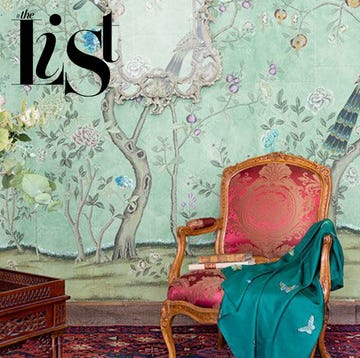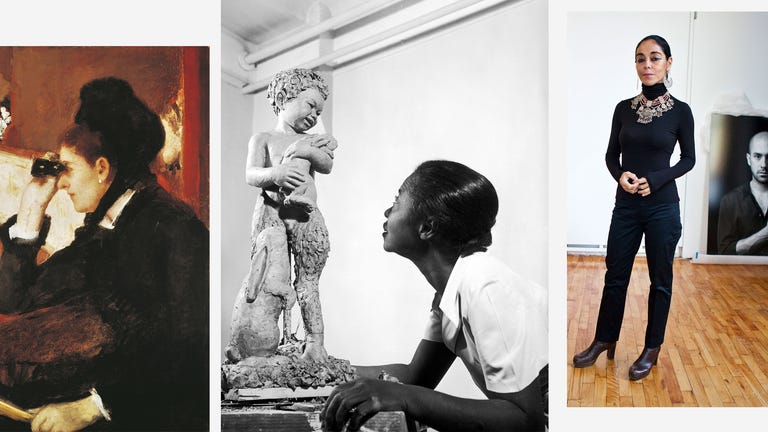
20 Female Artists You Need to Know
Brush up on your history and get to know the women who have changed the art world forever.
With the help of Kat Widing, junior specialist in the Post-War and Contemporary Department at Christie's, BAZAAR.com journeys through history to select 20 female artists who have changed the art world forever.
Élisabeth Louise Vigée Le Brun (French, 1755–1842)
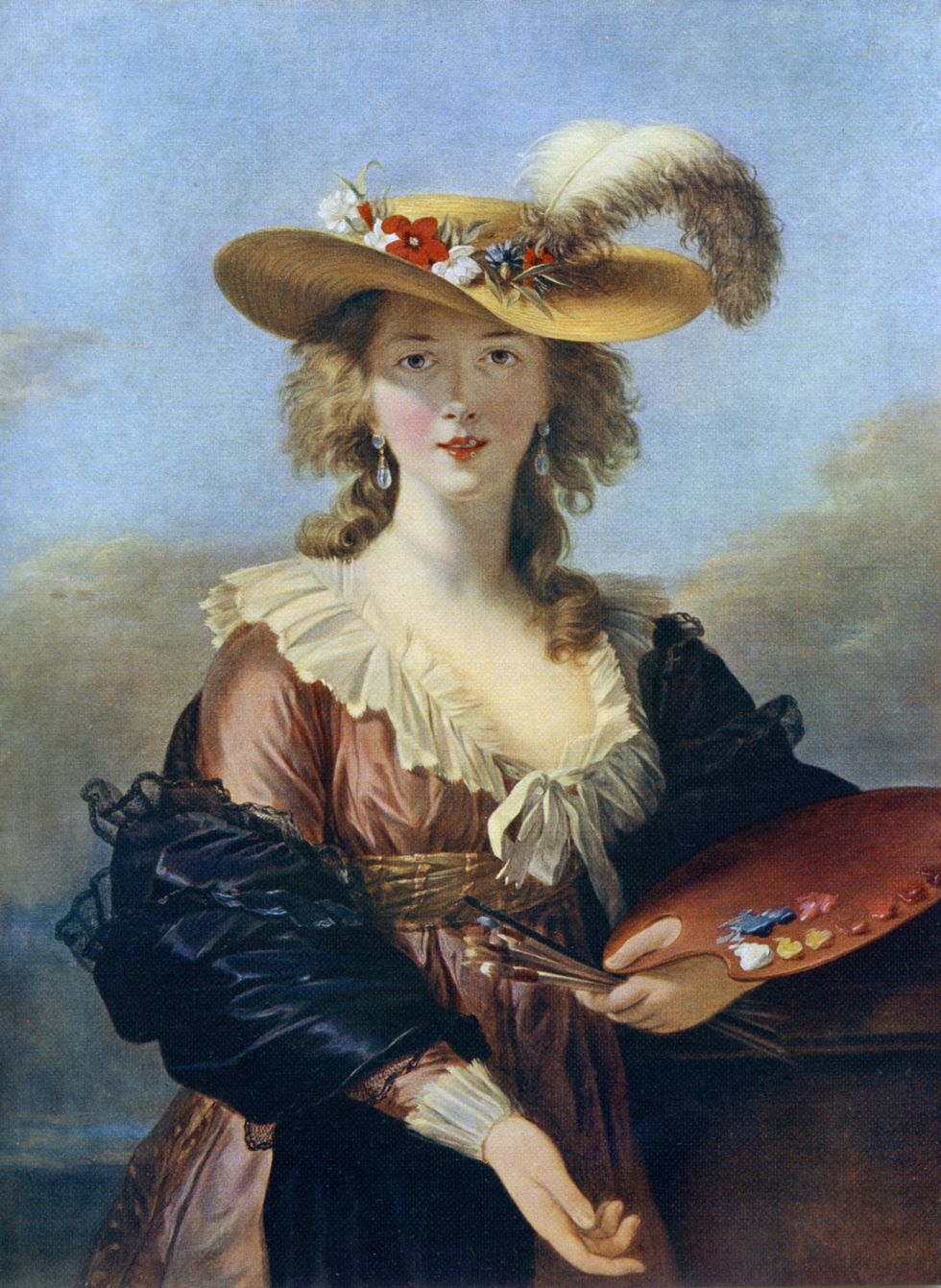
Completely self-taught, Élisabeth Louise Vigée Le Brun became an artist despite major obstacles (as with any woman in late 18th-century Paris) and was active during some of the most turbulent times in European history. With the intervention of Marie Antoinette, she was admitted into the French Academy at the young age of 28 as one of only four female members. Vigée Le Brun was particularly praised for her sympathetic portraits of aristocratic women, deemed more natural than the works of her contemporaries. Forced to flee Paris during the Revolution, the artist traveled throughout Europe, impressively obtaining commissions in Florence, Naples, Vienna, Saint Petersburg, and Berlin before returning to France after the conflict settled.
Pictured: Élisabeth Louise Vigée Le Brun, Self-Portrait in a Straw Hat (1782).
Mary Cassatt (American, 1844–1926)

One of three female artists and the only American officially associated with Impressionism, Mary Cassatt was also an invaluable adviser, helping introduce European art to major collectors in the United States. Cassatt strongly believed that painting needed to reflect modern life. Her modern woman is expertly rendered in the 1878 painting In the Loge, the first Impressionist work the artist exhibited in the United States. Many male artists depicted women in theater boxes as objects of display, but Cassatt's female protagonist plays a dynamic role engaged in the act of looking. Nonetheless, the male gaze prevails, as in the distance, a gray-haired theatergoer stares directly at her with his own binoculars. As viewer and onlooker, we complete the circle.
Pictured: Mary Cassatt, In the Loge (1878), MFA Boston.
Hilma af Klint (Swedish, 1862-1944)
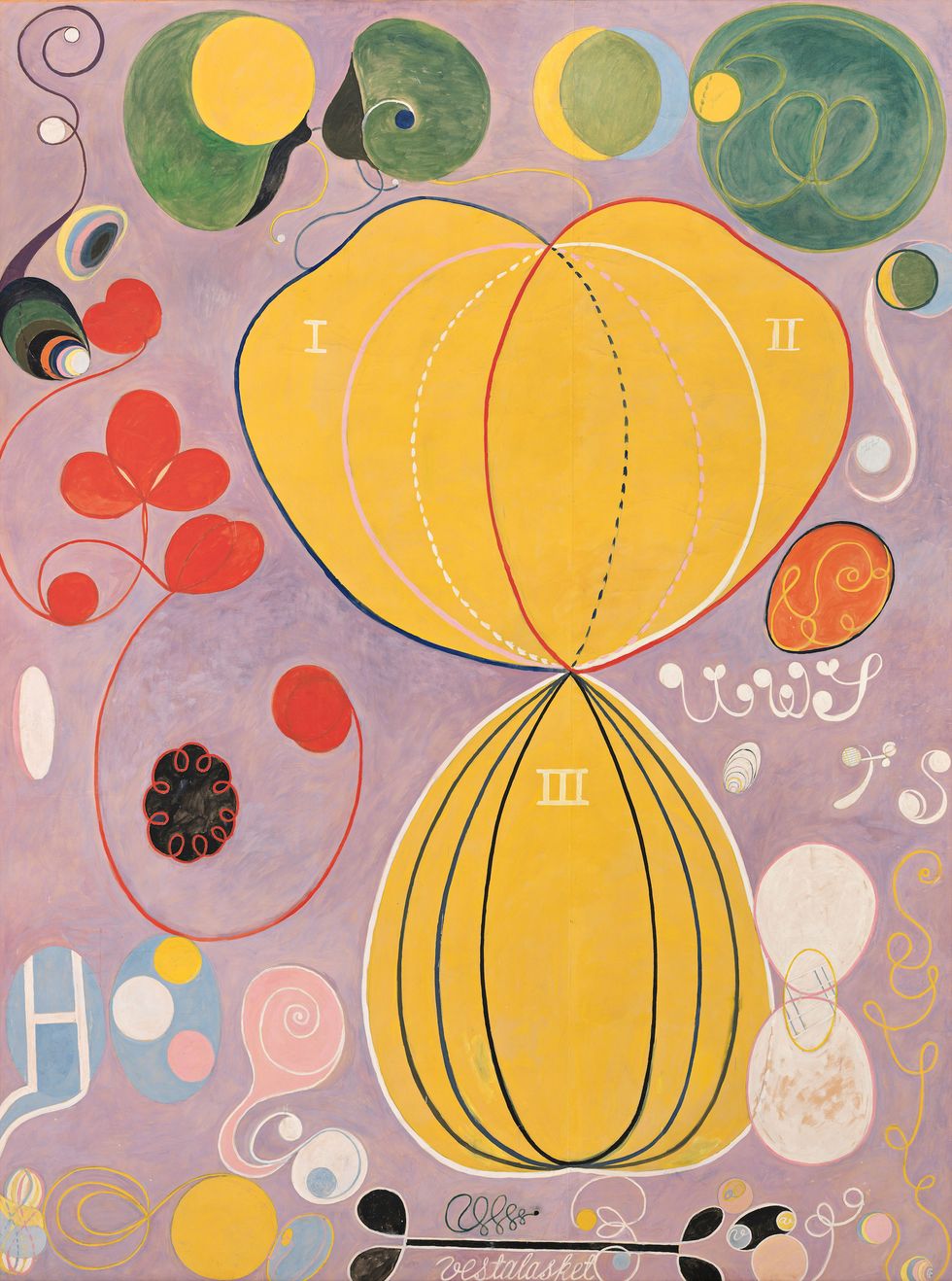
It wasn’t until the Guggenheim Museum hosted a major survey of her work that Hilma af Klint was finally widely recognized as a preeminent pioneer of abstract art; her earliest abstract compositions were completed years before those of Wassily Kandinsky, Kazimir Malevich, and Piet Mondrian. On view from October 2018 to April 2019, "Hilma af Klint: Paintings for the Future," featured an array of big, bright, somewhat magical-looking abstract works and remains the most-attended Guggenheim exhibition ever.
Born in Stockholm, af Klint attended the city’s Royal Academy of Fine Arts, graduating in 1887 and going on to become well known for her figurative work and serve as secretary of the Association of Swedish Women Artists. During this time, spiritualism and Theosophy gained momentum as people, including af Klint, looked for a way to reconcile religion with the many recent scientific advancements. Those belief systems inspired her first major group of nonfigurative, nonobjective work. Called The Paintings for the Temple, the 193 paintings were created between 1906 and 1915, and explored a dualistic perception of creation, evolution, and the universe. Intended to be installed in a spiral temple, af Klint mandated that the works not be shown until 20 years after her death. Those paintings, along with some of her earlier pieces, made up the bulk of the exhibition at the Guggenheim—a spiral sanctuary in its own right.
Pictured: Hilma af Klint, The Ten Largest, No. 7, Adulthood (1907).
Georgia O'Keeffe (American, 1887-1986)
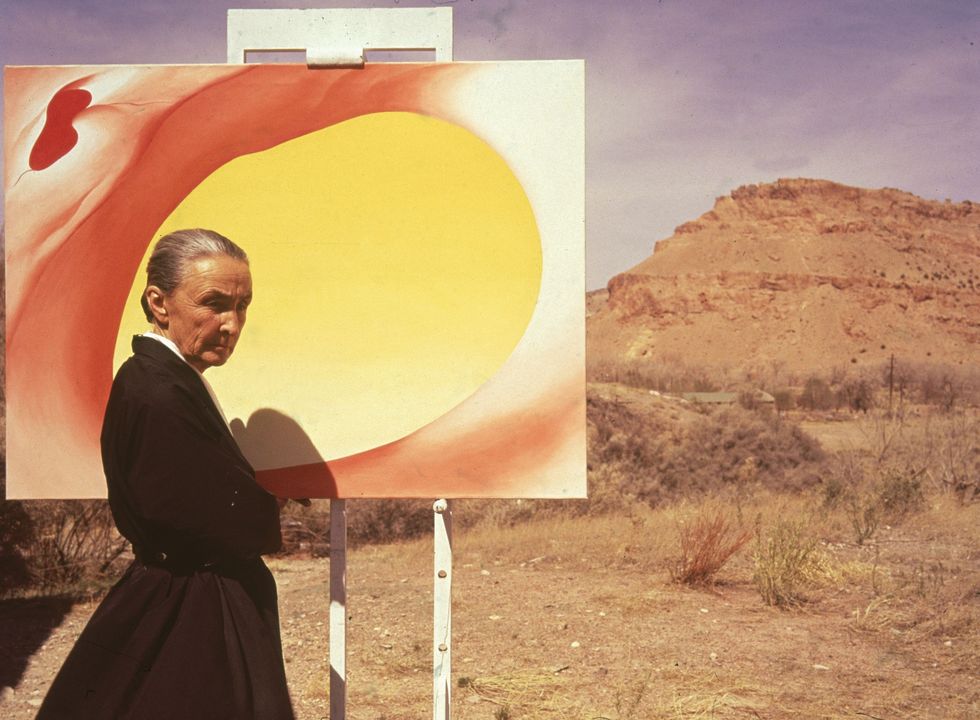
A seminal figure of American Modernism, in 1915 Georgia O'Keeffe was one of the very first American artists to produce a purely abstract work of art, in contrast to the dominant movement of American realism. In Music, Pink and Blue from 1918, O'Keefe abstracts a floral subject with extreme cropping, producing an archway of colorful petals that hum with a musical energy suggested by the title. The theories of Russian artist Wassily Kandinsky in part inspired O'Keeffe to explore "the idea that music could be translated into something for the eye," to achieve pure expression free of other external references.
Pictured: O'Keeffe posing with Pelvis Series Red with Yellow (1945) in Albuquerque, New Mexico, in 1960.
Augusta Savage (American, 1892-1962)

A trailblazing sculptor associated with the Harlem Renaissance, Augusta Savage was also an influential teacher and activist, advocating for equal rights for African-Americans in the arts. Born near Jacksonville, Florida, Savage moved to New York City in 1921 to study art at Cooper Union, beating out 142 men on the waiting list for her spot at the college. In 1923, Savage applied for a summer art program sponsored by the French government but was ultimately rejected because of her race. Thus began her lifelong fight to democratize and equalize the arts. One of her first commissions, a bust of W. E. B. DuBois for the Harlem Library, was well-received, and Savage proceeded to sculpt other African-American leaders, including Marcus Garvey and William Pickens Sr.
In 1929, her sculpture of a child from Harlem, Gamin, earned her widespread recognition and helped her secure a scholarship to study at the Academie de la Grande Chaumiere located in Paris, where she exhibited her work and won numerous awards. Savage returned to the United States in 1931 and launched the Savage Studio of Arts and Crafts, which became the Harlem Community Art Center, in 1932. Two years later, she became the first African-American artist to be elected to the National Association of Women Painters and Sculptors. For the rest of her life, the artist continued to create groundbreaking work—she was one of four women to receive a commission from the 1939 World’s Fair—and dedicated her time to teaching art to those around her.
Pictured: Augusta Savage working on a piece, New York, NY, 1938.
Frida Kahlo (Mexican, 1907-1954)
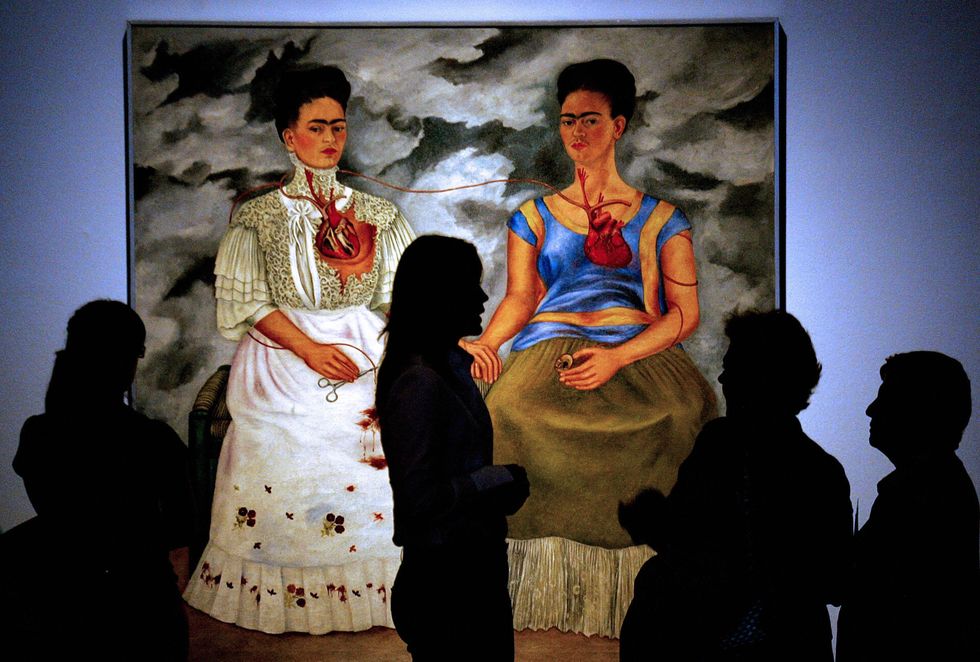
Frida Kahlo's fierce self-portraits featuring her iconic bold unibrow and mustache were once described by André Breton, the founder of Surrealism, as "ribbon[s] around a bomb." Indeed, Kahlo's paintings are simultaneously seductive and confrontational. In "The Two Fridas (Las dos Fridas)" from 1939, completed shortly after Kahlo's divorce from Mexican muralist Diego Rivera, Kahlo depicts her two personalities—one in traditional Tehuana costume with a broken heart, and the other in modern dress, independent, with a full heart. Kahlo's constant remaking and layering of her own identity was an important predecessor to identity politics, and continues to inspire artists today.
Pictured: Frida Kahlo, The Two Fridas (Las dos Fridas) (1939), on display in 2007.
Louise Bourgeois (French, 1911-2010)
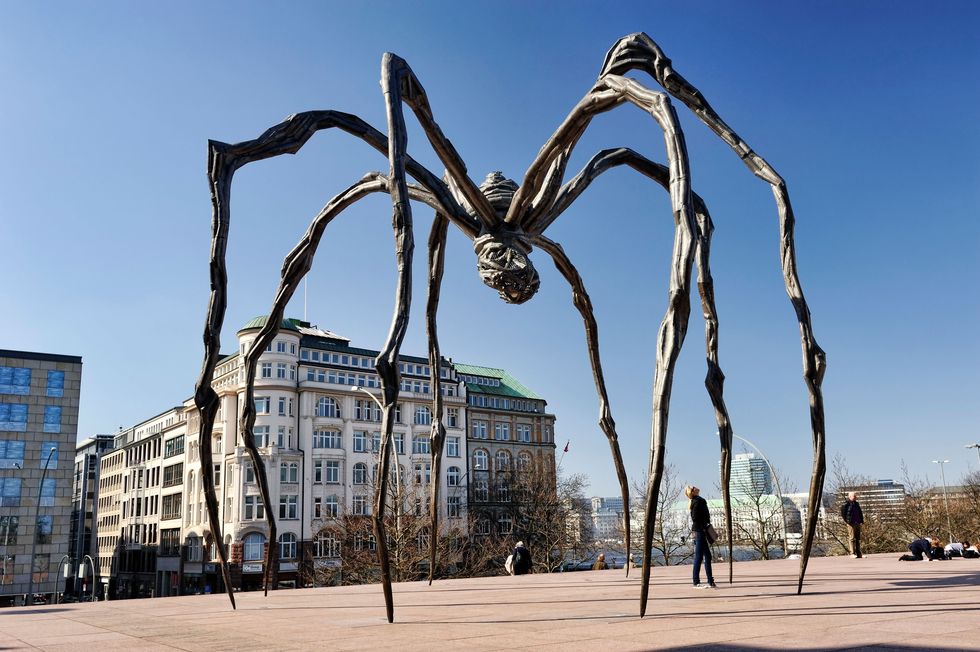
Born in Paris to parents who ran a tapestry restoration business, Louise Bourgeois grew up helping them in the workshop, filling in missing parts of the designs depicted on the tapestries. Although she studied mathematics and geometry at the Sorbonne, she eventually returned to art, practicing printmaking, painting, and large-scale sculpting throughout her long and varied career. Although she was not formally affiliated with any specific artistic movement, she exhibited with the abstract expressionists and explored themes including loneliness, jealousy, anger, sexuality, and the unconscious in her work.
In 1982, at the age of 70, Bourgeois was finally given her moment to shine when The Museum of Modern Art exhibited a retrospective of her work, which featured contorted human-like figures suspended from wires; fabric creations made from her old clothes; and enormous spider sculptures, which she is best remembered for today.
Pictured: Louise Bourgeois, Maman (1999), photographed in Hamburg, Germany in 2012.
Agnes Martin (Canadian, 1912-2004)
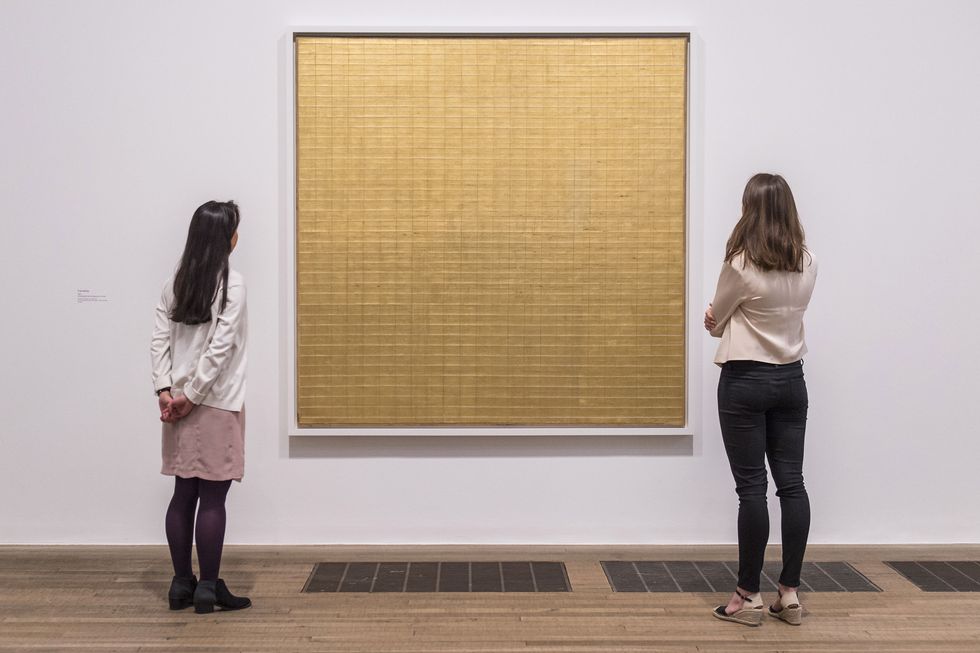
Agnes Martin, often associated with the minimalist movement, existed in a league of her own and defies easy categorization. Intensely private and spiritual, Martin explained that her paintings came to her fully formed, the size of postage stamps, which she would translate onto large-scale canvases. A glistening gold icon, Friendship from 1963 is a fabulous example of a seminal grid painting by the artist. Martin's delicately incised lines, seemingly perfect yet upon close inspection imbued with the sense of the human hand, produce an infinite field with a mysterious quality—the embodiment of a transcendent calm. A retrospective of Martin's work opens at the Guggenheim in New York in October 2016.
Pictured: Agnes Martin, Friendship (1963), on display at the Tate Modern in London in 2015.
Leonora Carrington (British-Mexican, 1917-2011)
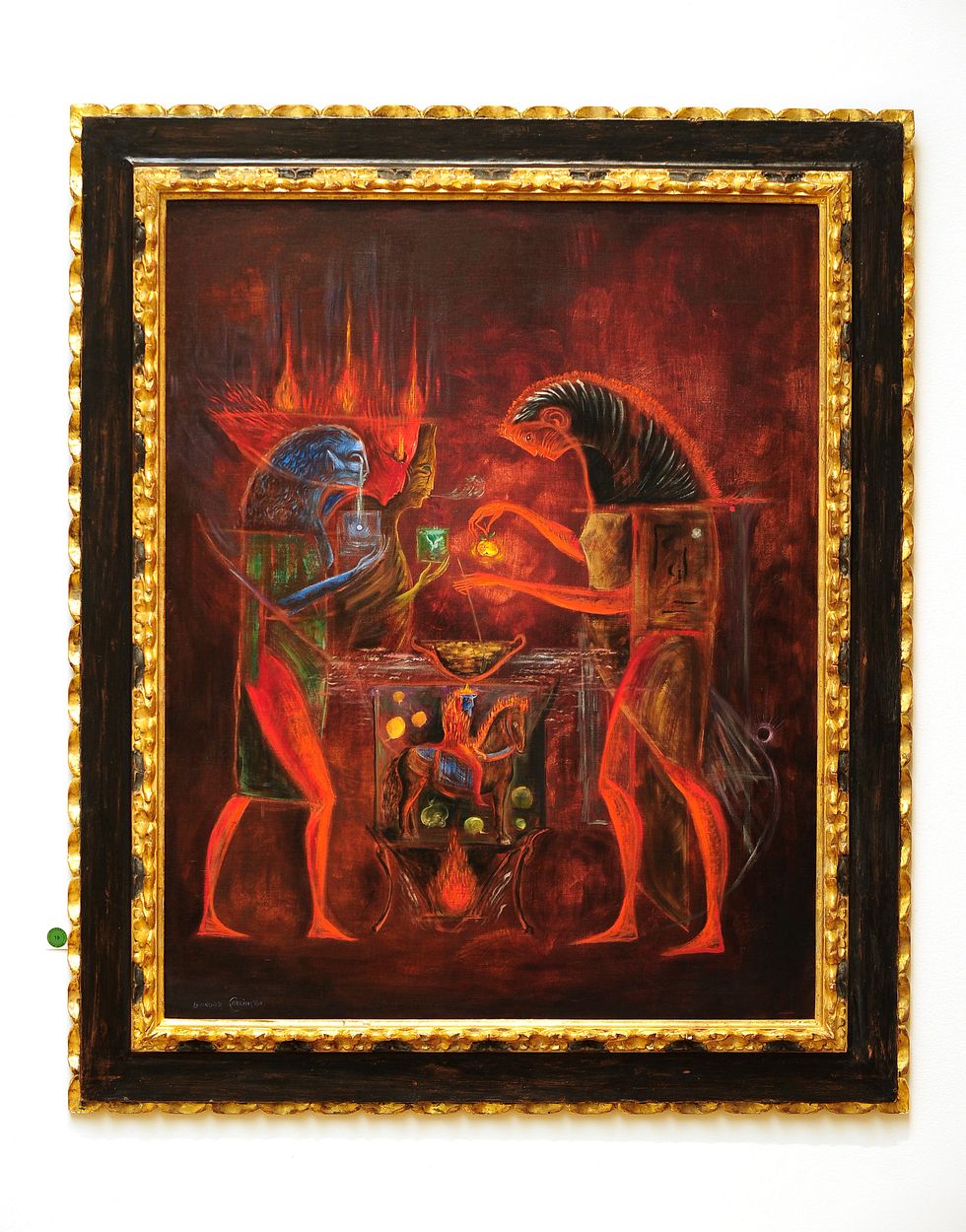
An artist and novelist known for her surrealist work, Leonora Carrington was born in the United Kingdom and studied painting at the Chelsea School of Art before transferring to the Ozenfant Academy of Fine Arts in London in 1936. That same year, she attended the International Surrealist Exhibition and was drawn to the work of German painter Max Ernst. The next year, the two met at a party and kicked off a brief romance, living together in Paris until the outbreak of World War II, at which point Ernst was arrested by local authorities and forced to flee persecution. He escaped to the United States with the help of Peggy Guggenheim, whom he later married.
Soon after the two split, Carrington was hospitalized with a mental breakdown and treated with powerful drugs. After her release, she fled to Mexico, where she became deeply inspired by local folklore, which factored heavily into her work. Her highly autobiographical paintings feature references to sorcery, metamorphosis, and the occult, depicting fantastical creatures and haunting scenes. During the '70s, she became involved in the Women’s Liberation Movement and designed a poster, titled Mujeres Conciencia, for the cause in 1973. In 1986, she won the Lifetime Achievement Award at the Women's Caucus for Art convention in New York for her commitment to her political work.
Pictured: Leonora Carrington, The ordeal of Owain (1959).
Elaine Sturtevant (American, 1924-2014)
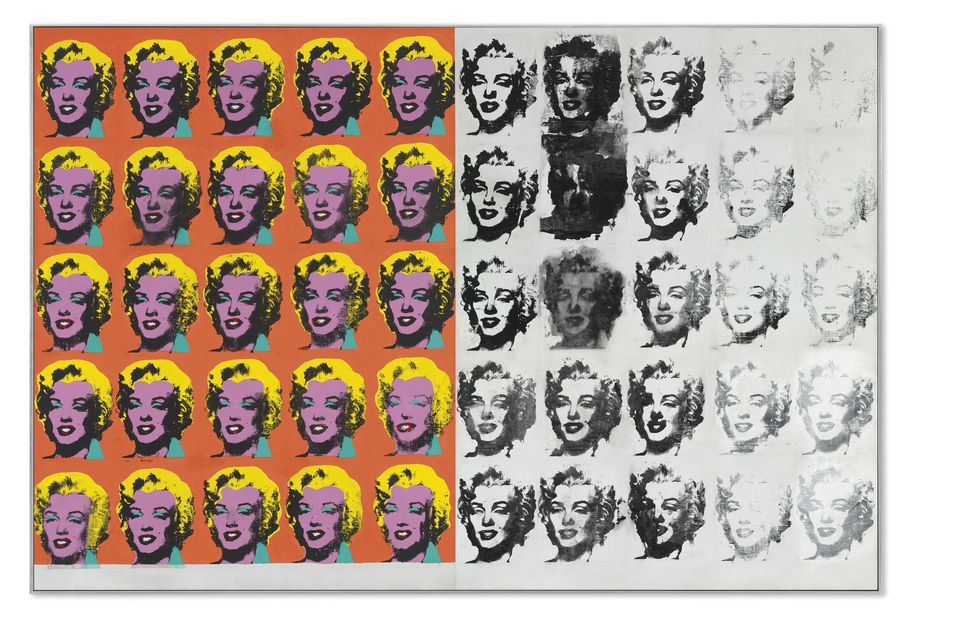
The works of Elaine Sturtevant (known by her surname) cause a double take; what at first looks like a painting by Andy Warhol or Jasper Johns is actually her own work, appropriating the forms and techniques of the original to a disturbing degree of accuracy. Since 1964, Sturtevant has appropriated the work of her male contemporaries to question the hierarchy of gender, originality, and authorship, as well as the structures of art and culture. In fact, Warhol even acquiesced to let Sturtevant use his screen maker to produce the same Marilyn screen that he used in his own work. As Sturtevant recalls, when Warhol was asked the details of his process, he would tell people to "ask Elaine."
Pictured: Elaine Sturtevant, Warhol Diptych (1973), sold by Christie's in 2015.
Betye Saar (American, B. 1926)

One of the most celebrated artists in the medium of assemblage, Betye Saar is a true icon within the contemporary art sphere. Born in Los Angeles, she attended the University of California, Los Angeles, graduating in 1947 with a degree in design but a passion for printmaking. In 1967, she visited an exhibition by found objects sculptor Joseph Cornell that radically impacted her artistic trajectory. She began lining assemblage boxes with her own prints and drawings, and filling them with found objects, creating pieces that addressed race and current events.
After the assassination of Dr. Martin Luther King Jr.in 1968, her work became more overtly political and extreme. During the 1970s, Saar was a member of the Black Arts Movement, composed of poets, writers, performers, and artists who merged activism and art to confront white power structures and give voice to the Black experience. Her most famous work, The Liberation of Aunt Jemima (1972), features a mammy doll armed with a rifle and a grenade, ready to fight against the prejudice, physical violence, and disparaging stereotypes imposed on Black Americans. As Saar has explained, “It is my goal as an artist to create works that expose injustice and reveal beauty. The rainbow is literally a spectrum of color while spiritually a symbol of hope and promise.”
Pictured: Betye Saar, Brides of Bondage, on display at Saddleback College at Mission Viejo, California in 1998.
Helen Frankenthaler (American, 1928-2011)
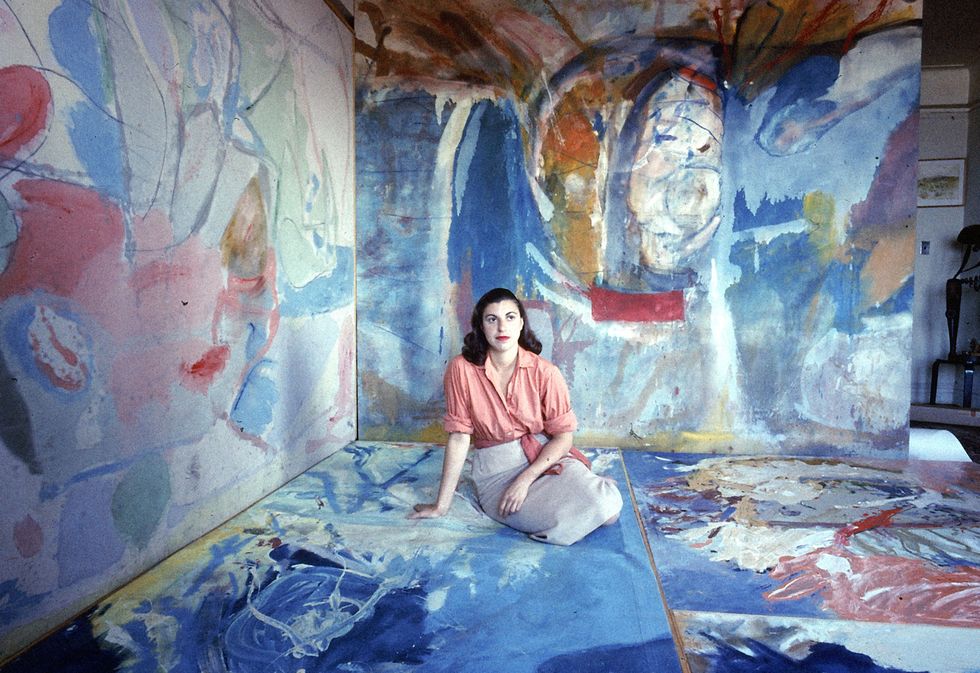
Helen Frankenthaler's breakthrough "stain" painting, Mountains and Sea, from 1952 played a pivotal role in the transition from the grandiose gesture of Abstract Expressionism to the flat, meditative forms of Color Field painting. First and foremost a colorist, Frankenthaler poured cans of paint onto raw canvas, allowing the material to soak into the support, forming amorphous shapes. As a woman of Abstract Expressionism, Frankenthaler broke through the masculine-dominated movement and let her own unique artistic voice be heard. Her work is currently part of a long-overdue exhibition titled the "Women of Abstract Expressionism," which opened at the Denver Art Museum in June 2016 and will travel to The Mint Museum in Charlotte and the Palm Springs Art Museum.
Pictured: Helen Frankenthaler c. 1956.
Yayoi Kusama (Japanese, B. 1929)
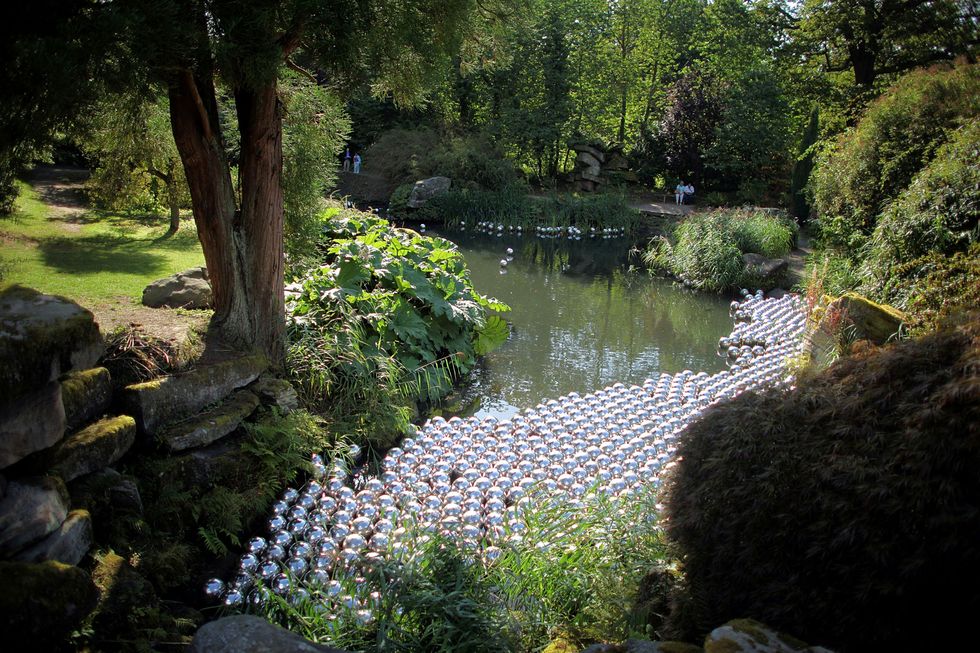
The queen of the polka dot, Yayoi Kusama was a significant force of the avant-garde art scene in the 1960s and continues to push the boundaries of art making—even into fashion through her recent collaboration with Louis Vuitton. Her "happenings" during the 1960s were groundbreaking, in particular Narcissus Garden of 1966, which the artist performed on the world stage at the Venice Biennale. Funded by fellow artist Lucio Fontana, Kusama gathered 1,500 silver balls—three-dimensional polka dots—on a lawn and offered them for sale to visitors for 1,200 lira (two dollars) each, as a critique of the commercialism of the art world.
Pictured: Yayoi Kusama, Narcissus Garden (1966), on display at Chatsworth House in Chatsworth, England, in 2009.
Judy Chicago (American, B. 1939)
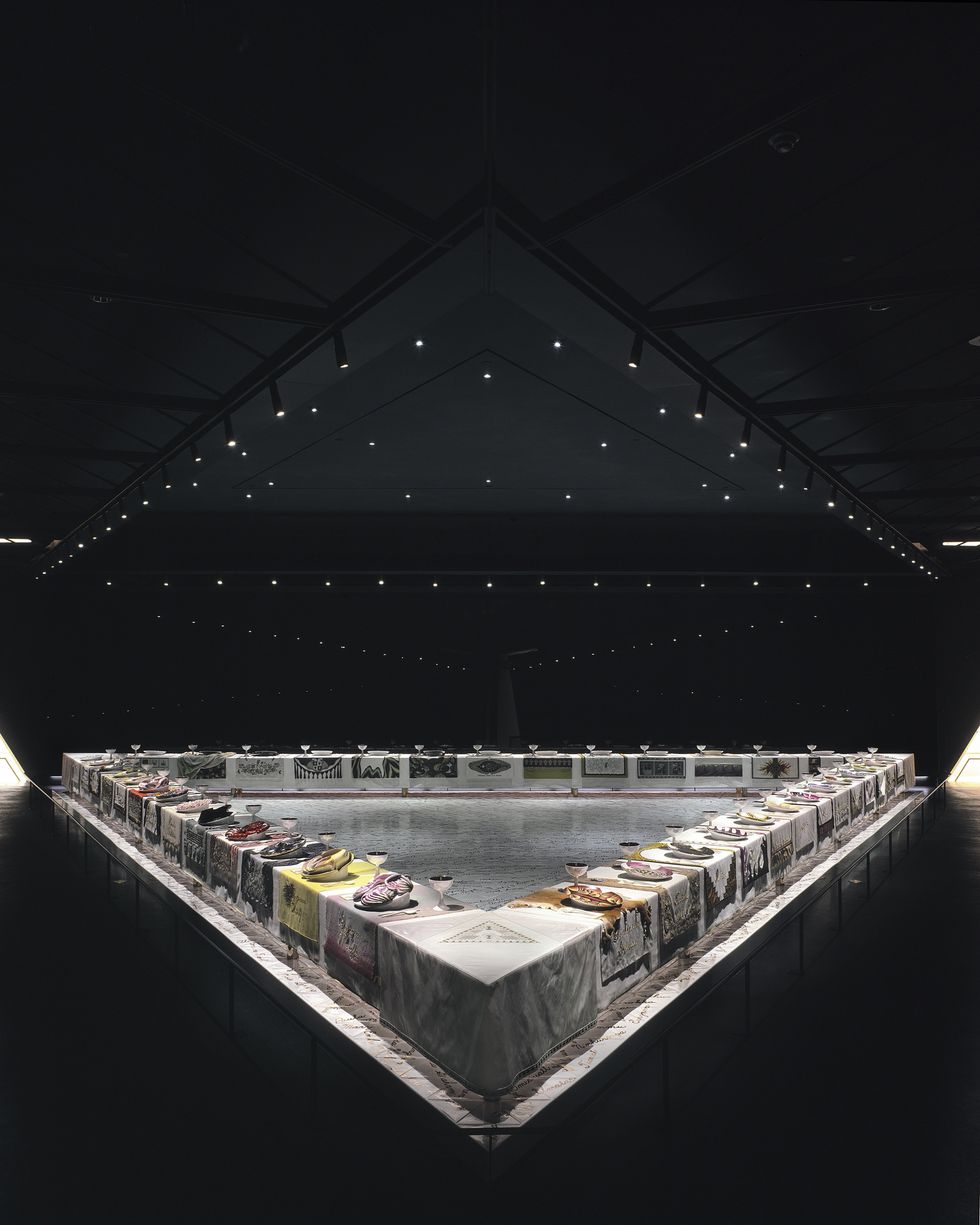
With her own homage to the notable women of history, feminist artist, author, and educator Judy Chicago went considerably further back in time than late 18th-century Paris. In The Dinner Party from 1974 to 1979, Chicago produced an iconic installation commemorating 1,038 women in history, with embroidered entry banners, an engraved floor and a massive triangular banquet table of place settings for 39 women, with guests ranging from the Primordial Goddess to Georgia O'Keeffe. Currently housed in the Sackler Center at the Brooklyn Museum, the installation is a centerpiece of feminist art, produced during a pivotal period in the 1970s when female artists tackled issues of gender head-on.
Pictured: Judy Chicago, The Dinner Party (1974-1979), Brooklyn Museum.
Marina Abramović (Serbian, B. 1946)
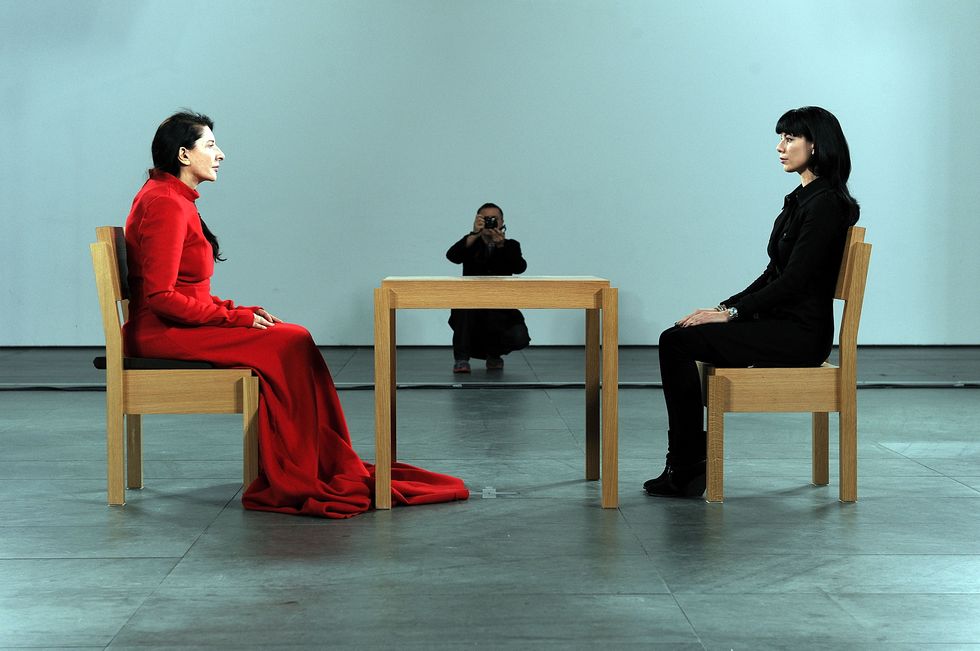
The self-proclaimed grandmother of performance art, Marina Abramović has been evolving her practice for more than five decades. Born in Belgrade, Yugoslavia (now Serbia), to strict parents with close ties to the country’s Communist regime, she studied painting at the Academy of Fine Arts in Belgrade before completing her masters at the Academy of Fine Arts in Zagreb.
She began exploring performance art in the '70s, forgoing a canvas and instead turning herself into the medium in order to more closely connect with her audience. Incorporating performance, sound, video, photography, and sculpture, her work, which consists of long routines that often put her in physical danger or pain, explores themes including trust, endurance, cleansing, exhaustion, and departure, and forces viewers to look on as she tests her body’s limits.
In 1976, Abramović began collaborating with the German artist Ulay, and the two remained artistic and romantic partners until 1988, when she discovered he’d been unfaithful. In 2010, Abramović staged an endurance-based performance at the Museum of Modern Art called The Artist Is Present. For two and a half months, she sat at one end of a table and invited viewers to sit across from her to briefly engage in silent encounters. Surprising Abramović and moving her to tears, Ulay took a seat at the other side of the table, and the two shared a moving moment after more than 20 years of not speaking.
Pictured: Marina Abramovic performs Marina Abramovic: The Artist is Present at Museum of Modern Art on March 9, 2010 in New York City.
Adrian Piper (American, B. 1948)

"Dear Friend, I am Black. I am sure you did not realize this when you made/laughed at/agreed with that racist remark," reads Adrian Piper's My Calling (Card) #1 from 1986 to 1990. A conceptual and performance artist, Piper is a trailblazer for addressing hot-button issues associated with gender and race. In her Mythic Being series, Piper transformed herself into a lower-class Black male and walked the streets of Cambridge, exposing the absurdity of society's stereotypes.
As a light-skinned Black female artist, her confrontational work remains extremely prescient and significant today, pushing us to question societal hierarchy and the perception of identity. Recently, Piper was awarded the Golden Lion Award for best artist at the 56th Venice Biennale in 2015 for her work The Probable Trust Registry, which consists of corporate-looking kiosks where visitors could choose to sign contracts agreeing to live by a set of rules that encouraged personal responsibility.
Pictured: Adrian Piper accepts her Golden Lion Award at the 56th Venice Biennale in 2015.
Marilyn Minter (American, B. 1948)
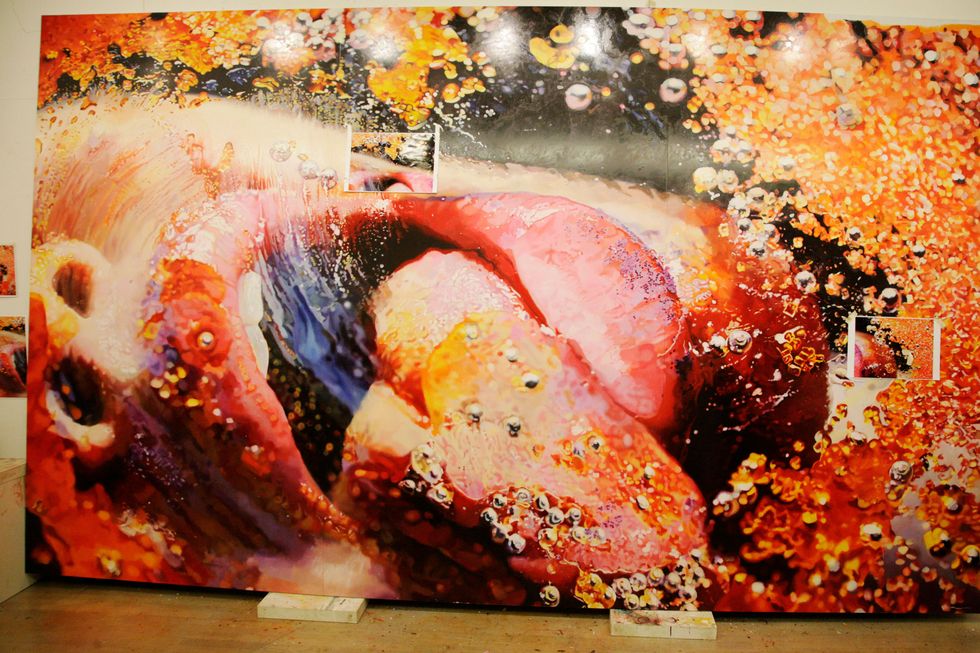
Blurring the lines between the sensual and the grotesque, Marilyn Minter’s photorealistic work addresses contemporary beauty ideals, sexuality, and the human body within the style of glossy fashion imagery. Known for her paintings on enamel and metal, she has a process that consists of taking photographs on film, processing them in a darkroom, and overlaying a select few to create an entirely new composition on which her final painting will be based.
After receiving her BA from the University of Florida in 1970 and her MFA from Syracuse in 1972, Minter moved to New York City and began capturing bland scenes associated with feminine domesticity like the kitchen floor and various food products. In the '80s, she focused her lens on more sensual subjects, namely the female body and pornography. Her sexually explicit work received widespread backlash, which compelled Minter to explore why passion, desire, and intimacy were—and are—shrouded in public discomfort. Incorporating elements of slick fashion and beauty photography and vibrant advertising imagery, Minter’s work juxtaposes notions of glamour and flawlessness (painted lips, bedazzled stilettos, and glittery eyelids) with less desirable realities (sweat, spit, hair, and dirt).
Pictured: Marilyn Minter, Orange Crush (2009), on display at her studio in New York in 2009.
Cindy Sherman (American, B. 1954)
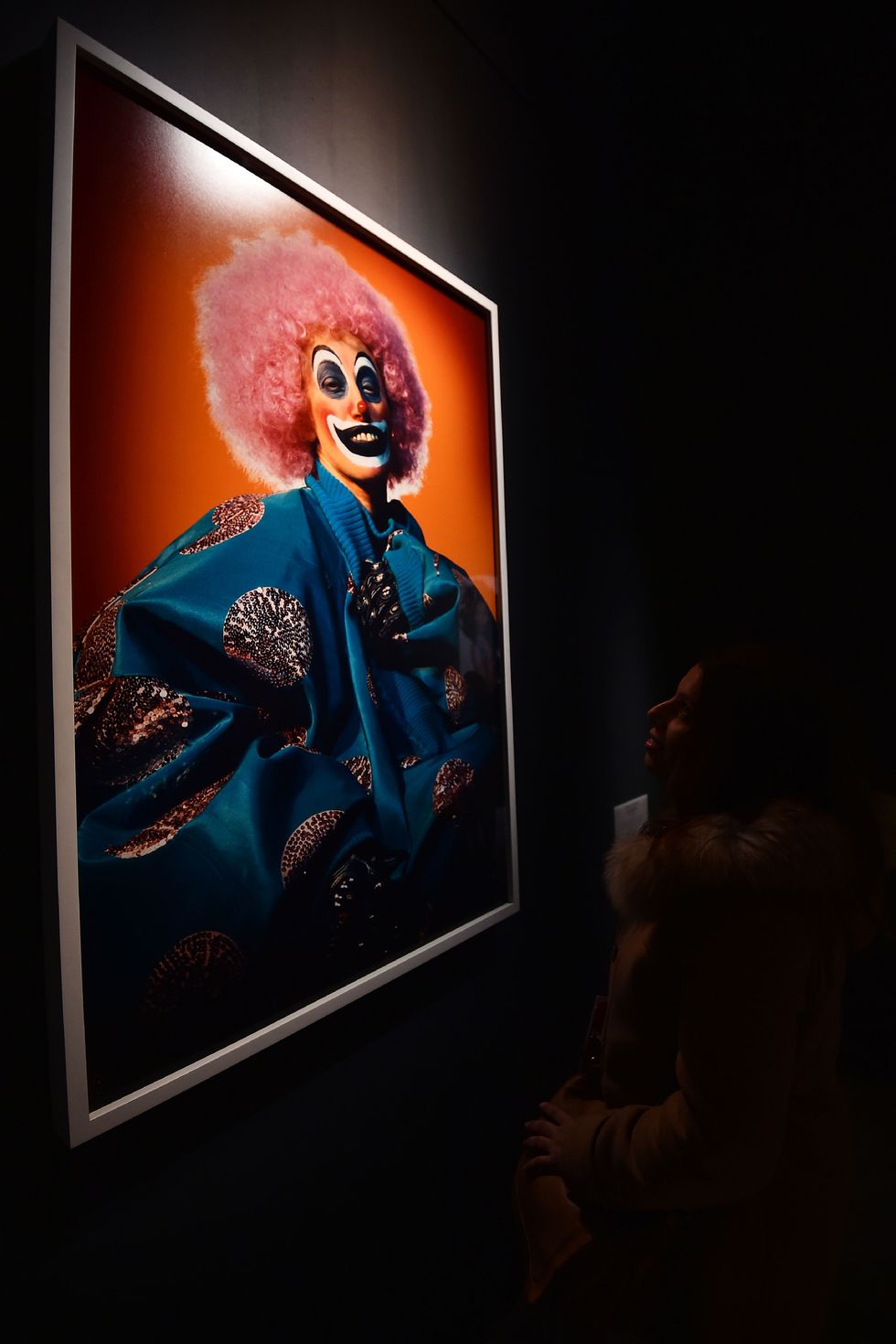
An important artist of the Pictures Generation, a group of American artists in the early '70s who were known for their analysis of media culture, Cindy Sherman creates photographic self-portraits that critique gender and identity. Serving as director, makeup artist, hairstylist, stylist, model, set designer, and photographer, the artist metamorphosizes into complex characters and shoots herself within equally involved scenes.
After attending the State University of New York at Buffalo, Sherman moved to New York in 1976 to pursue a career in photography. Shortly after arriving, she began working on Untitled Film Stills (1977-80), her now-iconic series in which she appears in an array of guises and settings, portraying female stereotypes found within film and the media including the unhappy housewife, the jilted lover, and the vulnerable naif. Since then, she’s continued to transform into a variety of characters, forcing her audience to confront other common stereotypes and their artificiality.
Throughout her career, Sherman has collaborated with a number of fashion brands including Prada, Dolce & Gabbana, Balenciaga, and Marc Jacobs, and with fashion magazines including Interview and Harper's BAZAAR. In 2016, she moonlit as a street style star for a satirical feature in Bazaar’s March issue.
Pictured: Cindy Sherman, Untitled #414, (2003), on display at the National Portrait Galley in central London in 2016.
Shirin Neshat (Iranian, B. 1957)
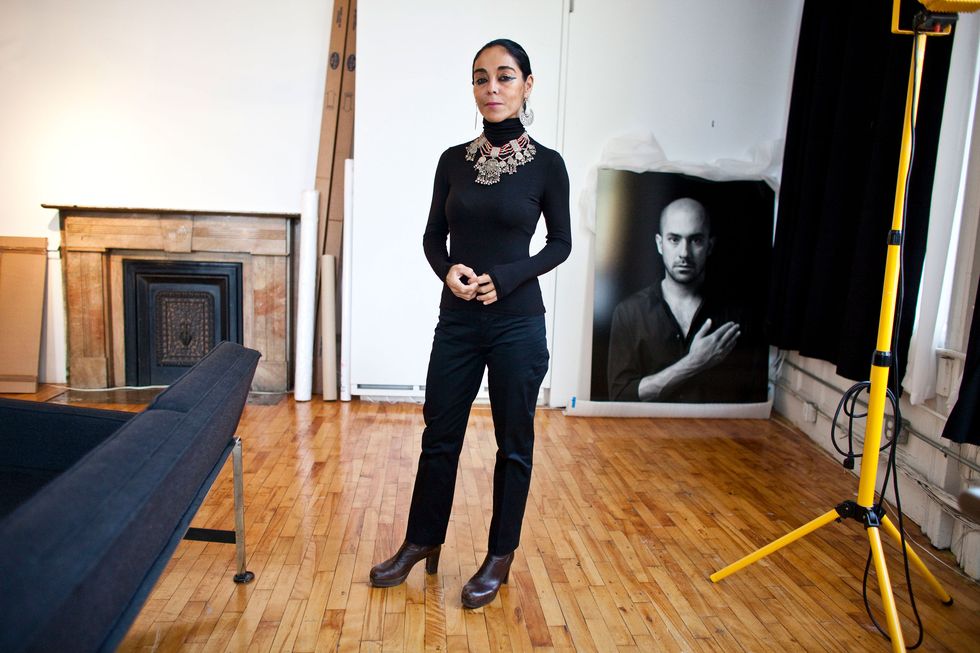
Born in Qazvin, Iran, Shirin Neshat moved to the United States in 1974 to study at the University of California at Berkeley, earning a BA and MA in fine arts in 1983. Soon after graduation, she moved to New York City, where she worked at the Storefront for Art and Architecture for 10 years. It wasn’t until returning to Iran in 1993, 14 years after the Islamic Revolution, that she began to once again create art.
Known for her work in photography, video, and film, Neshat’s projects often explore various oppositions, from Islam and the West to male and female. As she explained in an exhibition hosted by the Art 19 fundraising initiative, “It has always been my opinion that artists should be politically conscious and in my personal case being born as an Iranian, a country that has undermined basic human rights particularly since the Islamic revolution, I have uncontrollably gravitated toward making art that is concerned with issue of tyranny, dictatorship, oppression and political injustice. Although I don’t consider myself an activist I believe my art regardless of its nature, is a expression of protest, and a cry for humanity.”
Her first video installations—Turbulent (1998), Rapture (1999), and Fervor (2000)—examined gender and society, specifically the restrictiveness of Islamic laws against women; her first feature film, Mahdokht (2004), based on Shahrnush Parsipur’s novel Women Without Men, similarly also the topic. Neshat has been granted an impressive number of awards for her work, including the International Award at the 1999 Venice Biennale and the Silver Lion for best director at the 2009 Venice Film Festival.
Pictured: Shirin Neshat poses in her SoHo, New York studio in 2011.
Mickalene Thomas (American, B. 1971)
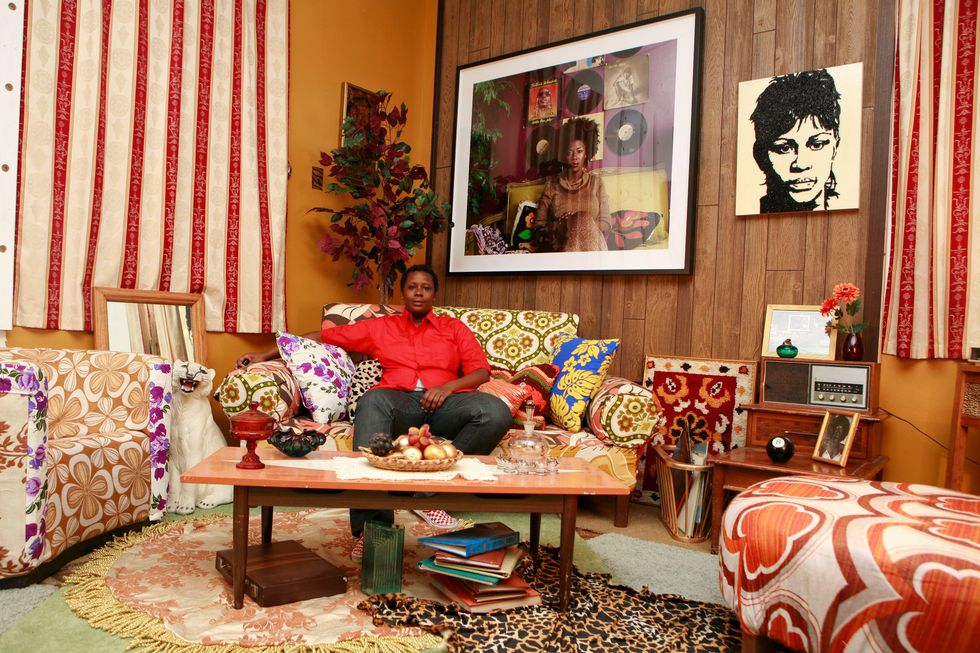
Best known for her collage-like paintings, Mickalene Thomas creates vibrant portraits and detailed interiors that address themes including sexuality, race, beauty, and gender, and examine how the representation of women in popular cultural informs our definition of femininity. Through her use of rhinestones, which serve as an analogy for femininity, Thomas draws attention to particular components of her pieces (hair, shoes, etc.) and asks viewers to consider what typically characterizes womanhood.
Inspired by an array of movements, including Impressionism, Cubism, and Dadaism, the artist often references the figurative work of early modernists like Pablo Picasso, Henri Matisse, and Edouard Manet in her portraiture, depicting her female subjects in poses popularized by her male predecessors in an effort to subvert their portrayal of women as objects.
A member of the Post-Black Art Movement, a category of contemporary African-American art, Thomas holds a BFA from Pratt Institute and an MFA from Yale School of Art and also works in photography, video, sculpture, and installations.
Pictured: Mickalene Thomas poses at Artists' Studios in New York City in 2008.

Ariana Marsh is Harper Bazaar’s senior features editor. Working across print and digital, she covers the arts, culture, fashion, literature, and entertainment—and a bit of everything in between.
Watch Next

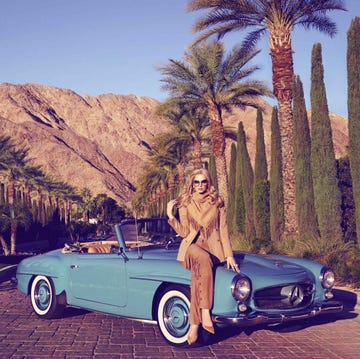
The Best Last-Minute Weekend Getaways from NYC

The Best Halloween Films on Netflix

Your Ultimate Guide to The Hamptons' Chicest Shops

The Best Long Weekend Summer Getaways

